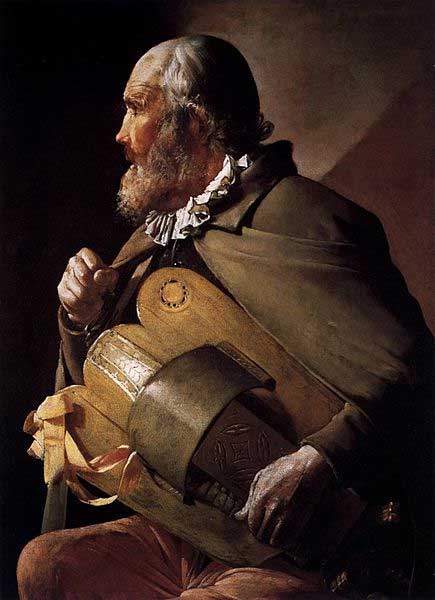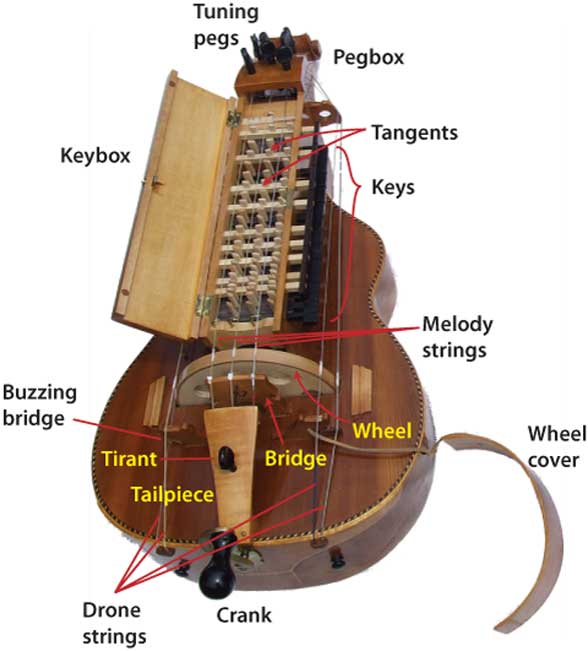
Hurdy Gurdy Man: Rock Star of the Medieval Music Scene
The hurdy gurdy is a musical instrument, or more precisely, a string instrument, that traces its origin to the Middle Ages of Europe. The hurdy gurdy was initially used to play sacred music, before being adapted to play popular and folk music. Later on, its status was elevated even further when it gained favor for a time at the French court.
Eventually, the hurdy gurdy’s popularity declined, and it became a musical instrument that many would not have heard of. In recent times, however, the hurdy gurdy is enjoying a sort of revival, both in Europe and in North America.
Why is it Called a ‘Hurdy Gurdy’?
No one actually knows the reason the hurdy gurdy is called as such in the English language. As a matter of fact, the English name of this musical instrument was only coined during the 18th century. One speculation is that the hurdy gurdy is related to ‘hurly burly’, which is used to describe an uproar or tumult, hence a possible reference to the noise made by this musical instrument. The hurdy gurdy is known also in French as a vielle à roue, which may be translated as a ‘wheel fiddle’, undoubtedly a name that provides a better description of the instrument.

A hurdy gurdy player. Blind Musician by Georges de la tour, 17th century. (Public Domain)
How Does a Hurdy Gurdy Work?
In essence, the hurdy gurdy is a string instrument, like a violin or a guitar. Unlike such instruments, which produce sound (through the resonance of the vibrating strings) by having the strings rubbed by a bow or by being plucked with the finger or a plectrum, the hurdy gurdy produces sound by having its strings rubbed by a rosined wheel. In a modern hurdy gurdy, the musician turns the wheel of the instrument, via a handle (the crank) with one hand (usually the right), while the other hand is used to play the tune on the keys in a keybox.
- Sweet Ancient Melodies of the Ney: One of the Oldest Musical Instruments Still in Use
- 1,000-Year-Old Lost Music Reconstructed from Ancient Manuscript
- The Bullroarer: An Instrument That Whirls Through Cultures and Time

Illustration of the parts of a hurdy gurdy. (Public Domain)
It has often been remarked that the sound produced by a hurdy gurdy is similar to that of a bagpipe. This is due to the presence of several drone strings outside the keybox, which sound the same note continuously. One of these drone strings is supported by a chien (French for dog), which is a small moveable bridge. By cranking the wheel harder, the chien may be made to vibrate rhythmically, which produces a buzzing accompaniment to the tune.
Origin of the Hurdy Gurdy
The origin of the hurdy gurdy is still a matter of debate. According to one speculation, it was the Moors of North Africa who introduced this musical instrument to Europe. When the Moors invaded Spain, they brought numerous string instruments with them, and one of these could have been a precursor to the hurdy gurdy.
The earliest form of the hurdy gurdy that is known for sure is known as an organistrum. Depictions of that instrument have been dated to the 12th century. The organistrum was a larger version of the hurdy gurdy and required two musicians to play it. It was mainly used in the church for sacred music, though the wooden keys could also be re-arranged in order to play secular music as well.

12th century relief indicating two players needed to play the organistrum. Church of Toro, Zamora, Spain. (Public Domain)
In the following century, the size of the organistrum was reduced so that it could be played by one musician – and that’s how the hurdy gurdy came into being. The key action of this musical instrument was also improved. Whereas the difficult key action of the organistrum restricted it to playing slow melodies and simple harmonies, its improvement made the hurdy gurdy suitable for playing dance music. As a result of this, the hurdy gurdy became used less for sacred music and more for folk and popular music.
- Unravelling the Identity of the Real Robin Hood
- Earliest ancient Chinese musical instruments unearthed in tomb complex
- Band Posters of the Renaissance: How Medieval Music Fans Showed off Their Taste

The small hurdy gurdy is barely visible under the arm and cloak of the player in this 17th Century painting. Gathering of Gamblers with Hurdy-Gurdy Player circa 1660. (Public Domain)
French Love for the Hurdy Gurdy
The hurdy gurdy reached its heyday during the reign of Louis XIV, the King of France. Prior to that, the hurdy gurdy was regarded as a peasant’s musical instrument. As the king was a fan of the Arcadian idea of rural bliss, his court followed his example and thus elevated the status of the hurdy gurdy, which was used to provide musical accompaniment for the pastoral plays that were being produced at that time.
The hurdy gurdy featured in the court of Louis XV’s court as well, though it fell out of favor during the reign of Louis XVI, who was not inclined to participation in the courtly diversions that his predecessors enjoyed. Even his wife, Marie Antoinette, though notorious for her indulgent lifestyle, was not particularly fond of pastoral plays, resulting in the decline of the hurdy gurdy’s popularity. After that, the hurdy gurdy returned to the streets.

Young woman with a hurdy gurdy and a child with tambourine, 18th century. (Public Domain)
Nevertheless, this musical instrument continued to be popular in France. For example, when peasants from the French countryside moved to Paris in search of jobs, they brought the hurdy gurdy with them. This musical instrument continued to be in use until the late 19th century, when it was replaced first by the diatonic button accordion, and then the chromatic button accordion, as they were easier to play and less troublesome to maintain.
The Modern ‘Hurdy Gurdy Man’
But in recent decades there has been a revival of interest in the hurdy gurdy in Europe as well as in North America. Perhaps the most famous reference to the instrument for people these days is the song ‘Hurdy Gurdy Man’ by Donovan. Although the instrument isn’t played on the song, it was enough to spark some interest in it.
Today the hurdy gurdy appears in all sorts of different music styles and there are even electric and electronic versions available to modern musicians.

Elf Fantasy Fair 2010 hurdy gurdy. (CC BY-SA 2.0 )
Top image: Detail of a Hurdy-Gurdy. Source: Bisual Photo /Adobe Stock
By Wu Mingren
References
Hackmann, A. & Hackmann, C., 2005. Frequently Asked Questions (FAQ). [Online]
Available at: http://www.hurdygurdy.com/faq.htm
Seeler, O., 1999. The Hurdy Gurdy Explained. [Online]
Available at: http://www.hotpipes.com/hgdemo.html
The Editors of Encyclopædia Britannica, 1998. Hurdy-gurdy. [Online]
Available at: https://www.britannica.com/art/hurdy-gurdy
Whyte, G., 2018. A Brief History Of The Hurdy Gurdy. [Online]
Available at: http://www.hurdygurdy.org/pdfs/hghistory.pdf
www.music.iastate.edu, 2018. The Hurdy-Gurdy. [Online]
Available at: https://www.music.iastate.edu/antiqua/hurdy.htm
















Comments
Did anyone else have the song Hurdy Gurdy Man go through your mind while reading this?